In today’s digital age, a positive brand reputation is more than just a buzzword – it’s a Key resource that can make or break a business. With consumers increasingly turning to online platforms to research products and services, managing your brand’s strong reputation has never been more critical. In this comprehensive guide, we’ll explore the best practices for brand reputation management in 2025, helping you navigate the complex landscape of online sentiment and perception.
To manage your brand’s reputation well, you need tools like reputation management software. This software helps keep track of what people are saying about your brand online. It also helps you understand if the things being said are positive or negative, so you can respond appropriately. By actively working to keep your brand looking good, you can earn people’s trust and prevent any harm to your reputation. Also, getting along well with local businesses and making sure customers trust you can make your brand look even better in your community and industry. Effective brand reputation management is essential for maintaining a positive image and fostering trust among consumers and stakeholders.
What are Brand Reputation Management
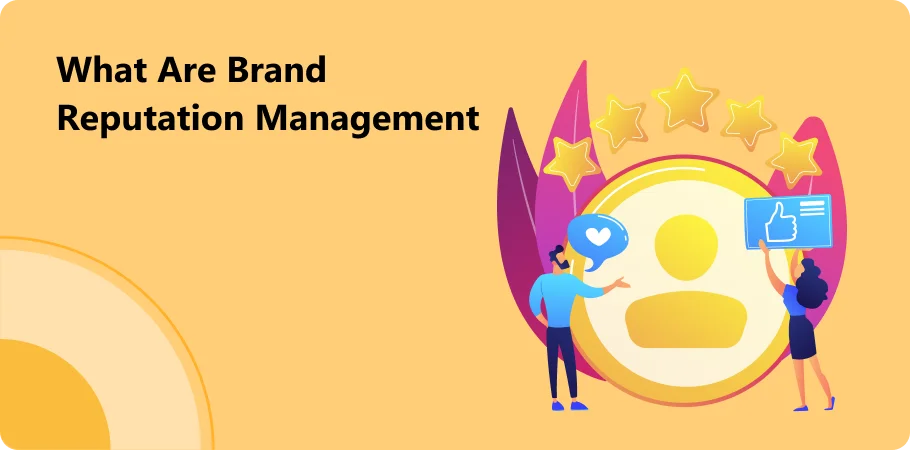
Understanding brand reputation management is essential for businesses thriving in today’s competitive landscape. At its core, a brand’s reputation encompasses the collective perceptions and opinions that customers, stakeholders, and the general public hold about a brand. Effectively managing a brand’s reputation involves:
- We are monitoring online conversations and reviews.
- We are proactively addressing customer concerns.
- It is delivering exceptional customer experiences that contribute to a good brand reputation.
Businesses can build an excellent reputation that resonates with their target audience by cultivating a positive brand image through consistent messaging and engaging in meaningful customer conversations.
Businesses need to pay attention to what customers are saying on social media, review sites, and forums. This helps understand how customers feel and where they can improve. By responding to customers and addressing their concerns, businesses show they care about providing good experiences and improving their reputation.
Moreover, businesses should aim to make every interaction with customers positive and memorable, from the first inquiry to after-sales support. These interactions shape how customers see the brand. Consistently delivering great service and surpassing expectations helps businesses improve their reputation and show they care about customer satisfaction and quality experiences.
Importance of Brand Reputation
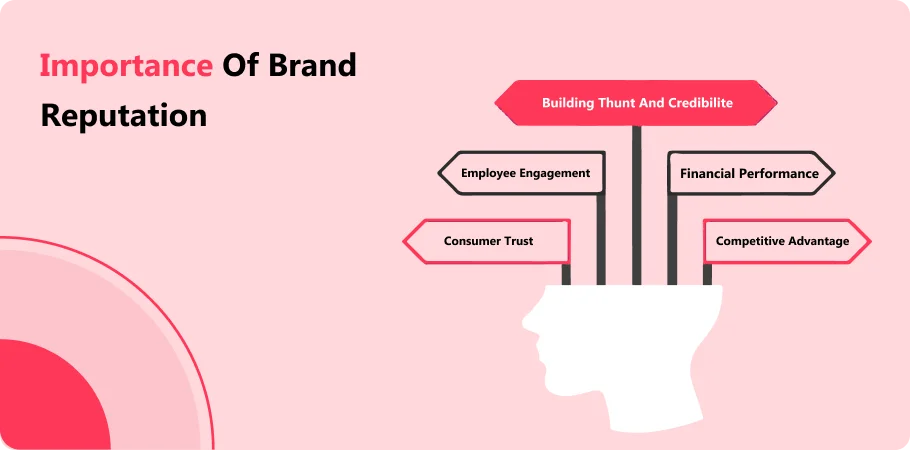
In today’s digital age, a brand’s reputation is crucial as consumers rely on online platforms for purchasing decisions. Positive online feedback attracts customers, while negative feedback can deter them, impacting revenue. Thus, brand reputation management online is vital for business success.
Additionally, a positive reputation sets a brand apart from competitors. By showcasing good experiences and addressing feedback professionally, brands can build trust and loyalty. Ultimately, reputation shapes consumer behavior online. Utilizing and maintaining social media accounts is essential in this process, as it allows brands to interact directly with customers and manage their online brand perception effectively. Effective brand reputation management involves actively monitoring online conversations, engaging with customers, and swiftly addressing any issues to maintain a positive brand image.
Developing a Reputation Management Strategy

A strong brand reputation management strategy is important for keeping a positive brand image and building trust with customers. Here are five key points to consider when crafting such a strategy:
Define Objectives and Goals
Begin by clearly outlining the objectives of your reputation management efforts. Setting clear goals is crucial for your reputation management strategy. It helps you focus on improving how people see your brand, handling negative feedback, and building trust with customers.
Identify Key Stakeholders and Platforms:
Know your audience – customers, influencers, and employees. Find where they hang out online – social media, review sites, or industry forums. This guides your efforts. Engaging with potential customers is vital. Understand their likes and habits to customize marketing and brand reputation management tactics.
Implement Monitoring and Listening Tools:
Utilize advanced tools to keep track of what people are saying about your brand online. This helps you stay aware of how your brand is seen and allows you to respond quickly to both good and bad feedback. Remember, consumers read reviews carefully, and their perceptions can significantly influence their purchasing decisions. So, it’s crucial to address any concerns or criticisms promptly to maintain a positive online reputation.
Engage and Respond Appropriately:
Actively engage with customers and stakeholders by responding to reviews, comments, and inquiries promptly and professionally. Whether addressing concerns, expressing gratitude for positive feedback, or providing assistance, personalized and empathetic responses can go a long way in shaping positive perceptions of your brand.
Promote Positive Brand Stories and Values:
Proactively share positive brand stories, values, and initiatives that connect with your audience. Whether it’s customer testimonials, philanthropic efforts, or employee achievements, highlighting these aspects strengthens your brand’s reputation and earns stakeholder trust. It’s a key aspect of your brand reputation management strategy.
Monitoring Brand Mentions and Sentiment
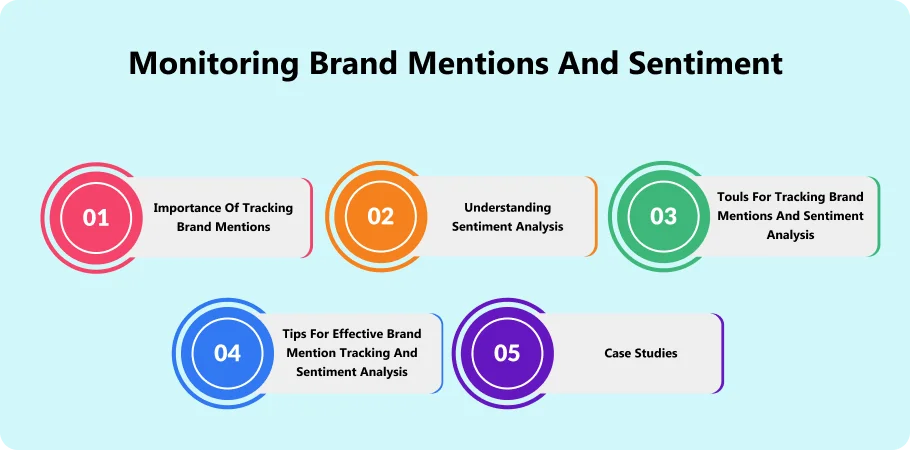
Keeping an eye on what people say about your brand online is key to managing your reputation. Advanced tools help you track mentions across social media, review sites, forums, and news articles. This helps you understand how people feel about your brand and address any issues quickly.
It’s important for businesses to keep an eye on reviews and mentions on major sites where customers share feedback. This helps them engage with customers directly and show their dedication to satisfaction. Also, monitoring social media mentions helps businesses prevent crises, find chances for positive interaction, and build trust with their audience. Creating a strong company culture that values transparency, authenticity, and putting customers first can boost reputation and loyalty among stakeholders.
Engaging with Customers and Responding to Feedback
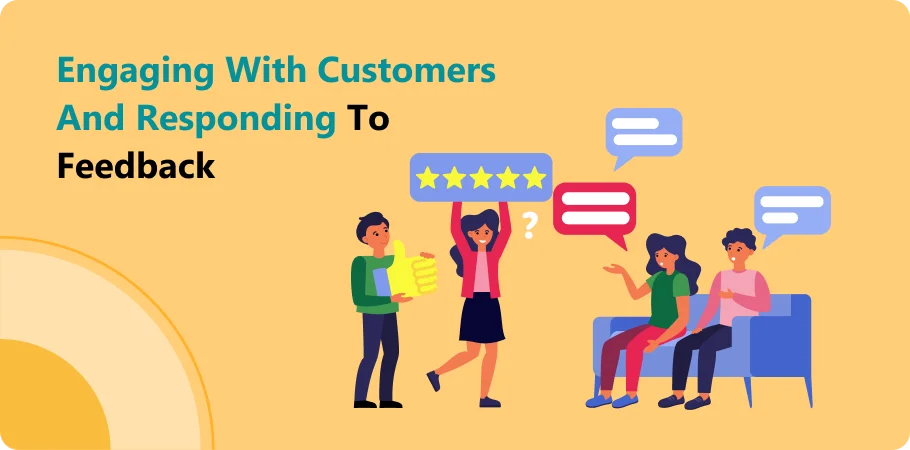
Engaging with customers and responding to their feedback is essential in today’s digital landscape, where these interactions impact a brand’s reputation. Being active on social media and promptly addressing customer questions and comments shows you value them and fosters community. Responding to both positive and negative reviews professionally shows you care about customer satisfaction and makes your brand more trustworthy.
Furthermore, leveraging various marketing channels and platforms to engage with customers through targeted social posts and campaigns allows brands to amplify positive experiences and testimonials. By highlighting positive reviews and customer stories, businesses can showcase their strengths and values, bolstering their positive reputation. Additionally, engaging with customers genuinely and transparently across social media channels fosters brand authenticity and builds trust, laying the foundation for long-term loyalty and advocacy. Maintaining an active and impactful social media presence is crucial for effectively reaching and engaging with customers in today’s digital landscape.
Book a CrmOne Demo
Experience the CrmOne simplicity and power. Our experts will show you the best ways to use it and answer your questions in real time. See how CRMOne fits your needs.
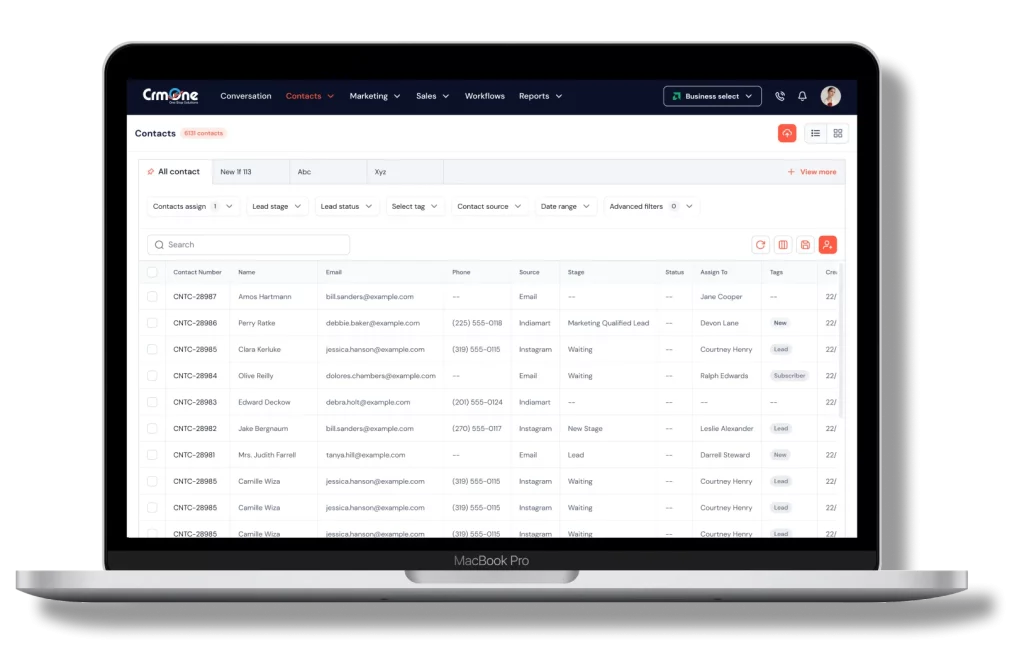
Promoting Positive Brand Stories and Experiences

Sharing positive brand stories and experiences is an important part of managing a brand’s reputation. With a good reputation management tool, businesses can find chances to highlight their strengths and successes. By showcasing great customer experiences and success stories, brands can create stories that connect with their audience and support their reputation strategy.
Implementing a loyalty program can encourage customers to share positive experiences and become brand advocates. By rewarding loyalty and engagement, businesses can build a community of devoted customers who spread the word. Addressing customer concerns openly and effectively can turn negative experiences into opportunities to demonstrate great customer service skills. This approach further fortifies the brand’s standing and credibility within the market landscape.
Leveraging Social Listening Tools

Leveraging social listening tools is a strategic approach to brand reputation management that allows businesses to gain valuable insights into consumer sentiment and trends across various online platforms. Here are four key points to consider when utilizing social listening tools:
Monitor Brand Mentions in Real-Time:
Social listening tools track brand mentions, hashtags, and keywords in real-time across various online platforms. This keeps businesses updated on discussions about their brand, enabling them to spot trends, address customer issues, and seize opportunities quickly. It helps them gauge their brand’s online reputation and manage feedback or issues promptly.
Identify Trends and Sentiment Analysis:
These tools offer advanced sentiment analysis capabilities, allowing businesses to gauge the tone and sentiment of online conversations surrounding their brand. By analyzing trends and sentiment, companies can gain insights into customer perceptions, preferences, and pain points, enabling them to Modify their marketing strategies and messaging accordingly.
Competitor Analysis and Benchmarking:
Social listening tools help businesses understand their competitors’ actions and public perception, allowing them to gauge their performance against industry rivals. By examining competitor mentions, engagement, and sentiment, companies can improve their strategies, leverage competitor weaknesses, and distinguish themselves in the market.
Engage and Respond to Customers:
Most importantly, social listening tools empower businesses to engage with customers proactively and respond to customer feedback promptly. By monitoring and reacting to customer inquiries, comments, and concerns, companies can demonstrate their commitment to client satisfaction, build trust and loyalty, and mitigate potential crises before they escalate.
Implementing a Crisis Management Plan
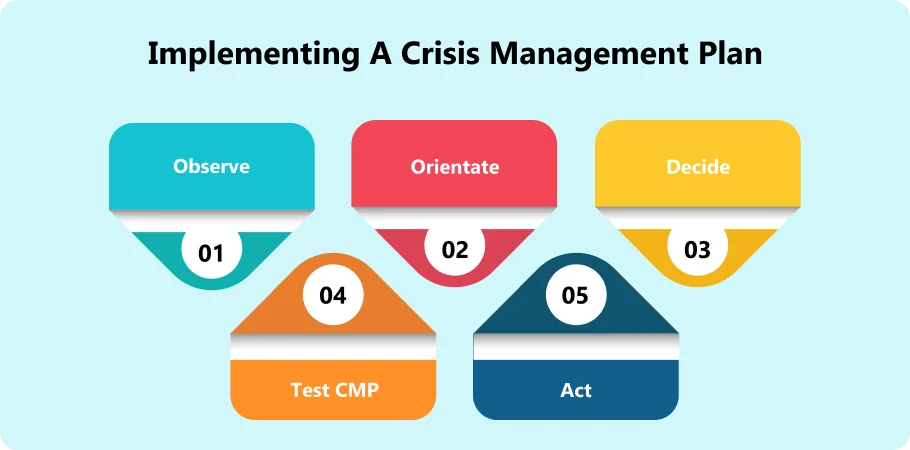
Implementing this Plan is crucial in today’s digital landscape, where online mentions can quickly escalate into full-blown reputation crises. Consumers perceive brands not just by their products or services but also by how they handle adversity. By establishing clear roles and responsibilities within the organization, companies can ensure swift and coordinated responses to any online mentions that may threaten their brand reputation. A robust brand reputation management strategy should also include proactive measures to cultivate a strong brand reputation before a crisis hits, thereby building customer loyalty that can withstand challenges.
When a crisis emerges, customer experience becomes paramount. Quick and transparent communication through appropriate channels, including social media and official statements, can help mitigate damage. Observing search engines and social media platforms for negative reviews and addressing them promptly demonstrates a commitment to resolving issues and preserving customer loyalty. By integrating these strategies into their crisis management plans, companies can navigate turbulent times while safeguarding their brand reputation and fostering trust among their audience.
Building Brand Authenticity and Trust

Building brand authenticity and trust requires a multifaceted approach incorporating customer feedback into every aspect of your strategy. By actively listening to your audience, brands can adapt and refine their offerings to meet their needs and expectations better. Implementing effective brand reputation management strategies is crucial in maintaining a solid brand reputation amidst the ever-changing landscape of consumer sentiment and online discourse.
Central to building trust is prioritizing customer experience across all touchpoints. Consistent messaging on social media and owned channels strengthens brand identity and builds a loyal community. Clear guidelines ensure authentic communication that aligns with brand values, boosting credibility and trust. Prioritizing brand safety shows ethical commitment and guards against reputation risks. By being transparent, authentic, and consistent, brands build real connections with consumers, fostering long-term loyalty. Effective brand reputation management integrates these elements seamlessly, safeguarding and enhancing the brand’s image in the eyes of its audience.
Measuring and Evaluating Success

Finally, it’s important to assess your marketing efforts and social media posts to manage your brand’s image effectively. Track metrics like brand sentiment, online reviews, customer satisfaction, and brand awareness. Regularly monitor these metrics and adjust your strategies to ensure your online reputation management is effective. Also, establish clear messaging guidelines for consistent brand portrayal across platforms, boosting your reputation.
Conclusion
In conclusion, brand reputation management requires a proactive and strategic approach. Understand the importance of business reputation and overall brand reputation, develop a comprehensive strategy, and implement best practices like monitoring brand mentions, engaging with customers, and promoting positive brand stories. This helps shape how the public perceives your brand, establishing customer trust and driving a great reputation for business success in 2025 and beyond.
Integrating a robust CrmOne system can further enhance these efforts by streamlining customer interactions and feedback management. By efficiently handling customer relationships, CRMOne ultimately bolsters brand reputation, making it easier to maintain a positive image and ensuring long-term success.
Get started for Free
Start for free today. Boost your sales by clicking the Get Started button. With CrmOne, you can manage leads, sales, and customer service all in one place.
